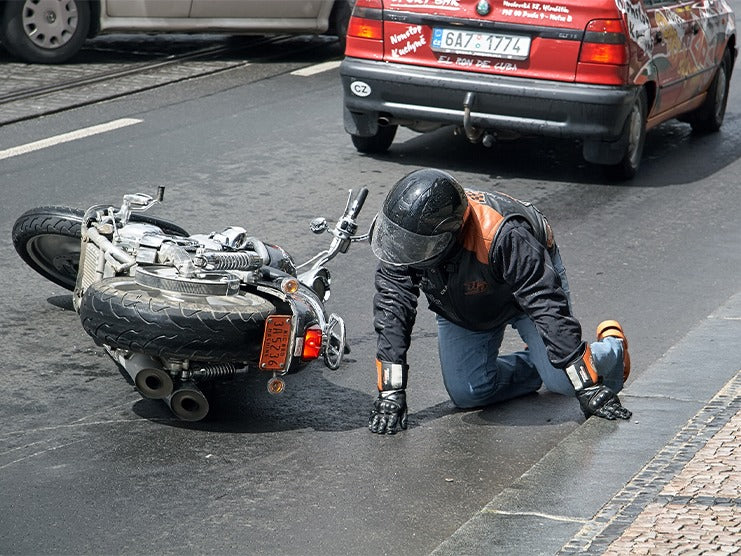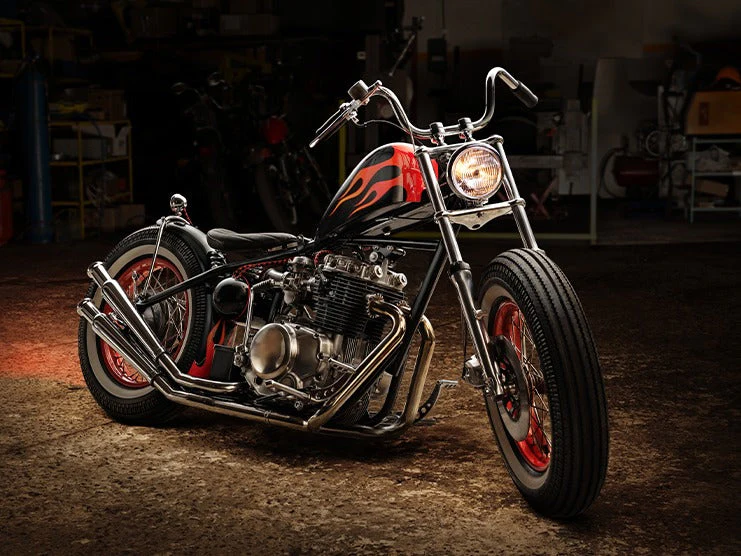Table of Content
“Car have bumpers, motorcyclists have bones.”
Riding a motorcycle is fun. It becomes even more thrilling as you twist the throttle to speed up. Modern motorcycles are built to ensure a safe riding experience. Most modern motorbikes are more expensive than most cars due to being fitted with various rider aids, safety features, and performance enhancers. However, no matter how many safety features a motorcycle has, accidents can still happen. Even if you are a responsible motorcyclist, follow all the traffic laws, wear a helmet, and stay alert while riding, you can still get into an accident due to someone else’s fault. If you want to avoid getting into accidents, make sure to wear protective gear and ride responsibly. Read this article to learn how to protect yourself in a motorcycle accident.
1. How to Protect Yourself in a Motorcycle Accident
Every rider needs to learn how to protect themself in a motorcycle accident. Nobody wants to get into a motorcycle crash since it can cause irreparable damage to your expensive motorcycle and result in permanent bodily injuries. Therefore, you must be familiar with how to position yourself when falling off a motorcycle in the event of a motorcycle crash, along with other useful techniques.
1.1 Apply the Brakes
During a motorcycle crash, when you are thrown off a motorcycle, you only have a fraction of a second to react. Most riders suffer serious or fatal injuries due to not thinking fast when in danger. The first you should do is apply the front brake. Do not pull the front brake lever abruptly as it can cause the brake to lock and throw you off over the handlebars. Pull the brake lever, then apply the rear brake as well. Thinking and acting fast when applying the brakes could save you from getting seriously injured.
1.2 Get Out of the Way of Traffic
If you lose control of your motorcycle, try to direct it away from traffic or large stationary objects to minimize damage. If you are on a busy road, try to fall off somewhere out of the way of lanes with fast-moving traffic to avoid getting run over.
1.3 How to Position Yourself While Falling Off a Motorcycle
While falling off a motorcycle, prioritize protecting sensitive body parts, including the head and neck. Head injuries can cause permanent damage, sensory loss, paralysis, and death.
Do not try to break your fall using your hands or you might break your fingers or wrists. Unfortunately, this is the instinctual reaction most motorcyclists have when falling off a motorcycle.
Try to relax your body as much as you can to avoid fractures and serious injuries. However, be careful not to relax your body too much since it can leave your neck and limbs vulnerable.
Adjust the position of your joints when in the air to help reduce the impact of a fall.
Avoid falling on your back since it can fracture your spine and cause permanent paralysis.
While falling off a motorcycle, also make sure to protect your head with your arms.
1.4 The Tuck and Roll Method

The safest way to fall off a motorcycle is the tuck and roll method. However, you will need to practice this method often to ensure you fall safely. Reducing momentum by breaking your fall will help soften the impact of a fall. When doing a tuck and roll, the rider constantly shifts pressure from the sides of the arms to the shoulders to the back, and finally the sides of the hips.
1.5 Be Prepared
In case of a motorcycle crash, make sure to carry important documents and emergency contact numbers of your family or friends.
1.6 Do Not Hold Onto the Handlebars
During an accident, do not keep holding the motorcycle handlebars. Most motorcycle riders try to continue steering their motorcycles to keep them from being irreparably damaged during an accident. However, it is better to let the motorcycle go rather than being crushed underneath it. Use your arms to protect your head rather than reaching for the handlebars during a motorcycle accident.
Fixing and repairing a motorcycle after a crash can be expensive depending on the extent of the damage. However, it will cost less than medical expenses if you are severely injured in a motorcycle accident.
Also Read: 10 MOST COMMON MOTORCYCLE ACCIDENT INJURIES
1.7 Do Not Lose Focus
Try to stay focused and remain calm during a motorcycle accident. Keeping a cool head will make it easier to execute the safety measures listed above. Panicking can cause you to lose control of your body and affect your reflexes.
1.8 Do Not Get Up Immediately After a Motorcycle Crash
If you have survived a motorcycle accident, do not try to immediately get up if you are not lying in a lane with high-speed traffic. Take your time until you regain your senses. An injured rider might not feel any pain right after an accident due to the adrenaline rush. Trying to get up quickly after a motorcycle accident can result in broken bones, tissue damage, spinal cord injury, and traumatic brain injury.
2. Ride Safe
You can avoid motorcycle accidents by following the following traffic and safety laws:
- Always wear a helmet approved by the Department of Transportation (DOT) to prevent severe head injuries.
- Wear appropriate protective riding gear, including a leather jacket, pants, gloves, motorcycle riding boots, and knee pads.
- Ride under the speed limit.
- Do not ride while under the influence.
- Make sure you are visible on the road by wearing bright colors.
- Turn on your motorcycle’s headlight while riding in the dark.
- Use the turn signals to tell the vehicles behind you when you are going to change lanes
- Do not try to overtake other vehicles if it is unsafe
- Avoid distractions by not using your phone while riding a motorcycle
- Stay alert and focus on the road conditions, road hazards, and surrounding vehicles
- Use the side mirrors to check for vehicles coming from behind before changing lanes
- Avoid riding in bad weather
- Take safety classes and attend training sessions
3. Conclusion
To be a responsible motorcycle rider, make sure to not ride above the speed limit, wear protective riding gear all the time, and do not ride while drunk. Get a motorcycle license and attend safety riding classes and training sessions to improve your riding skills.
Motorcycle riders must also learn how to get into a comfortable riding position to reduce the severity of falling off a motorcycle during a motorcycle crash. This will help protect your head, face, and spinal cord from smashing onto the road, sidewalk, or other vehicles. Learn how to do a tuck and roll while falling off a motorcycle to avoid severe injuries and bruises. Let go of the handlebars during a motorcycle accident to protect yourself.
If you love your motorcycle and want to make it safer, more comfortable, and aesthetically appealing, Viking Bags has several aftermarket parts to install, including crash bars, sissy bars, fairings, handlebars, seats, and backrests. Viking Bags also offers good-quality luggage bags, including motorcycle trunk bags, sissy bar bags, and saddlebags.













Leave a comment
All comments are moderated before being published.
This site is protected by hCaptcha and the hCaptcha Privacy Policy and Terms of Service apply.